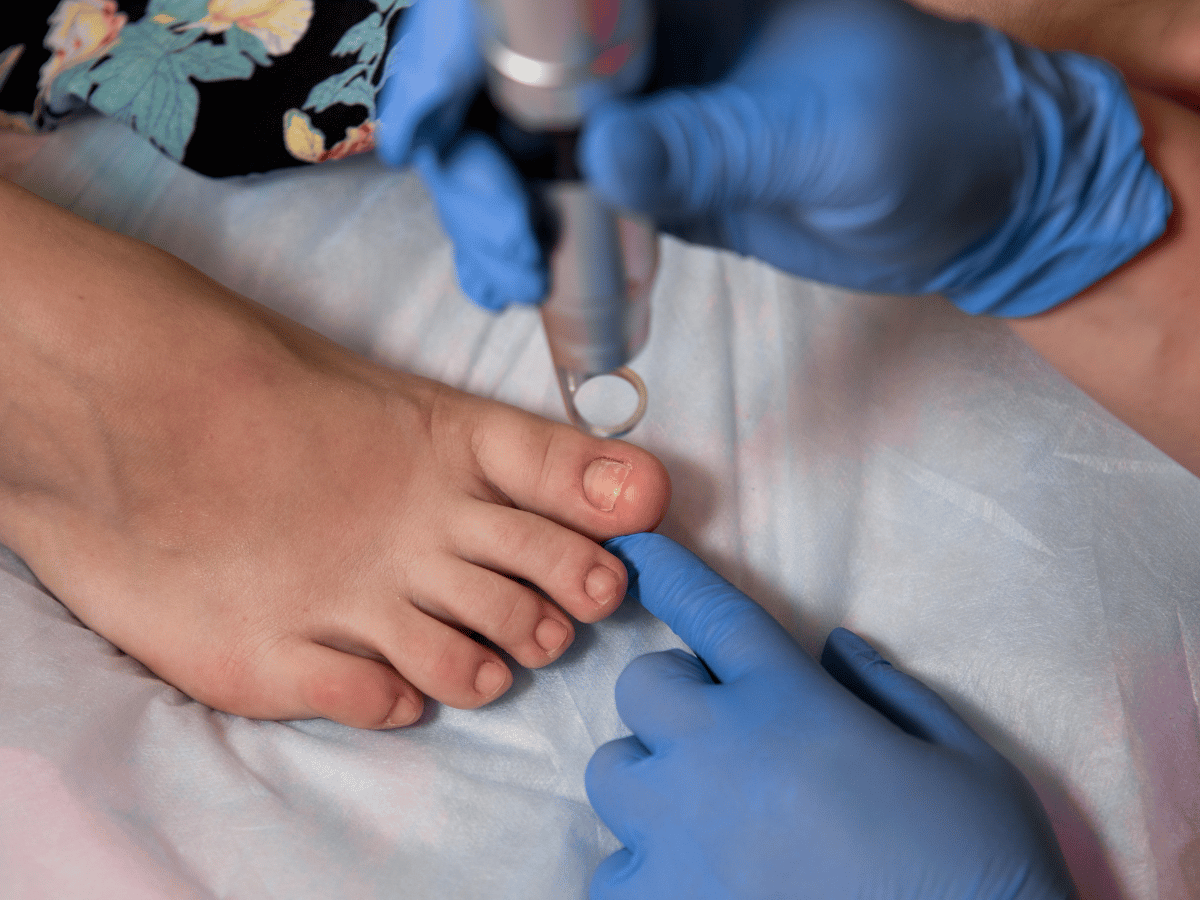
Foot fungus, or tinea pedis, is a common and irritating skin infection caused by dermatophytes, fungi that thrive in warm, moist environments. Often referred to as athlete’s foot, this condition primarily affects the skin between the toes and the soles of the feet. We tend to see an uptick in cases in areas like South Florida due to the region’s humid climate, which promotes fungal growth.
The infection spreads easily in communal places such as pools, locker rooms, and public showers. Many mistakenly think it only affects athletes, but in reality, nearly anyone can get it, especially without proper foot hygiene or when sharing contaminated surfaces.
Understanding what causes foot fungus can help us prevent and manage it more effectively. The culprits? Fungi like Trichophyton rubrum and Trichophyton interdigitale. These microorganisms feast on keratin, a protein found in our skin, hair, and nails.
You’re at greater risk for infection if you:
These risk factors significantly raise the chance of developing tinea pedis, especially when coupled with poor foot hygiene.
What should we watch for? The early signs of foot fungus are pretty recognizable:
In more advanced cases, the infection can spread to the toenails, a condition called onychomycosis, which causes thickened, discolored, or brittle nails. Left untreated, it might even spread to the hands or groin.
Most of the time, a skilled clinician can diagnose an athlete’s foot just by looking. However, when symptoms don’t improve or mimic other skin conditions (like eczema or psoriasis), we may use additional methods, such as:
Getting an accurate diagnosis is key to determining the most effective treatment plan.
The good news? Most foot fungus infections are treatable with over-the-counter or prescription products. Here are the main options:
Topical Antifungal Medications:
These come in creams, sprays, or powders and are ideal for mild to moderate infections.
Oral Antifungal Medications:
Oral meds are reserved for more severe infections or those involving toenails. They require a prescription and may need liver function monitoring during treatment.
Regardless of the medication, consistency is essential. We always remind patients, just because symptoms disappear doesn’t mean the fungus is gone. Complete the full course of treatment to prevent recurrence.
You’ve probably heard the saying, “An ounce of prevention is worth a pound of cure.” That couldn’t be more accurate here. Prevention starts with good daily habits:
Practicing these simple steps can significantly reduce the chances of infection.
For some, foot fungus becomes a recurring burden. Why does this happen? Often, it’s due to incomplete treatment, reinfection, or untreated environmental triggers like contaminated shoes or communal spaces.
To manage recurrent cases effectively, our approach includes:
If the infection keeps returning despite these efforts, consider visiting a podiatrist or dermatologist for a more comprehensive plan.
Let’s talk about regional impact. South Florida’s warm and humid climate creates an ideal breeding ground for fungi. Add to that our culture of barefoot beach walks, pool usage, and active lifestyle, and it’s easy to see why tinea pedis is more prevalent here.
Facilities like community gyms and water parks can inadvertently foster the spread of infection. That’s why raising local awareness and making preventive foot care a community habit is so important.
If you’re experiencing symptoms like itching, peeling skin, or discomfort between your toes, it’s time to take action. Connect with the specialists at South Florida Multispecialty Hospital today, expert care is just a step away.
Athlete’s foot is a fungal infection specifically targeting the skin of the feet, especially between the toes. Other fungal infections like ringworm or jock itch affect different parts of the body but are caused by similar fungi.
Common signs include itching, flaking, cracked skin, and redness between the toes or on the soles. Symptoms often worsen in warm or moist conditions.
Topical antifungals such as terbinafine or clotrimazole are highly effective for most people. For more severe or nail-involved infections, oral antifungals may be necessary.
Yes. If untreated, it can spread to the Toenails (onychomycosis), hands (tinea manuum), or groin (jock itch). Fungal spores can also infect family members.
Maintain excellent foot hygiene, wear breathable shoes, rotate footwear, use antifungal powder, and avoid walking barefoot in shared wet areas.
Some natural remedies like tea tree oil or vinegar foot soaks may provide relief, but they aren’t as reliable as medically approved treatments.
Your health deserves dedicated attention and comprehensive care. Join our Concierge Primary Medical Care program today and experience a new standard of personalized medical care.
Schedule a consultation now using the below listed form!
Connect with South Florida’s trusted multispecialty care team and take control of your health with compassion and convenience.
©2025 South Florida Multispecialty Medical Group. All Rights Reserved.